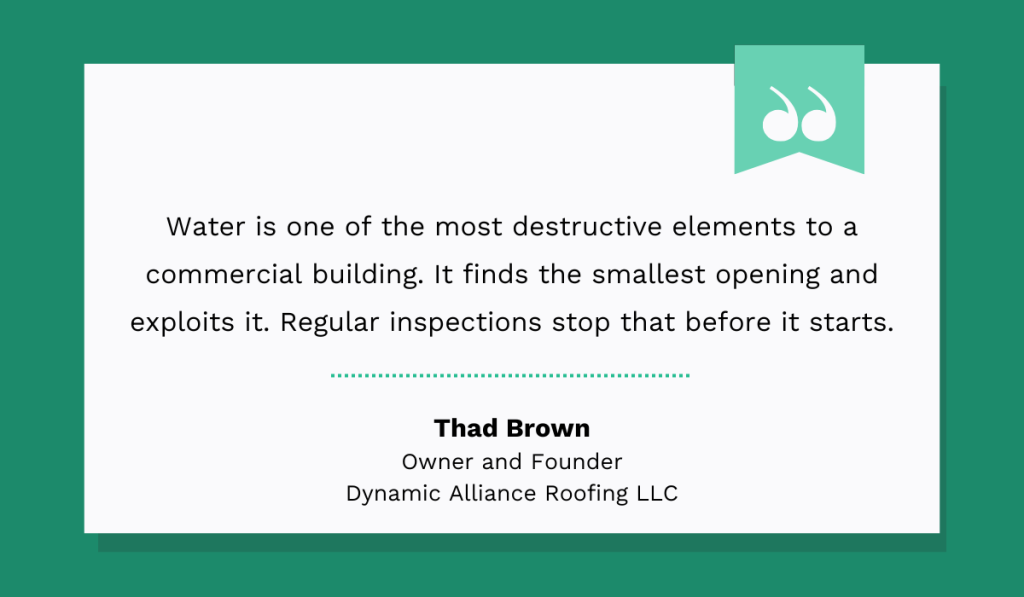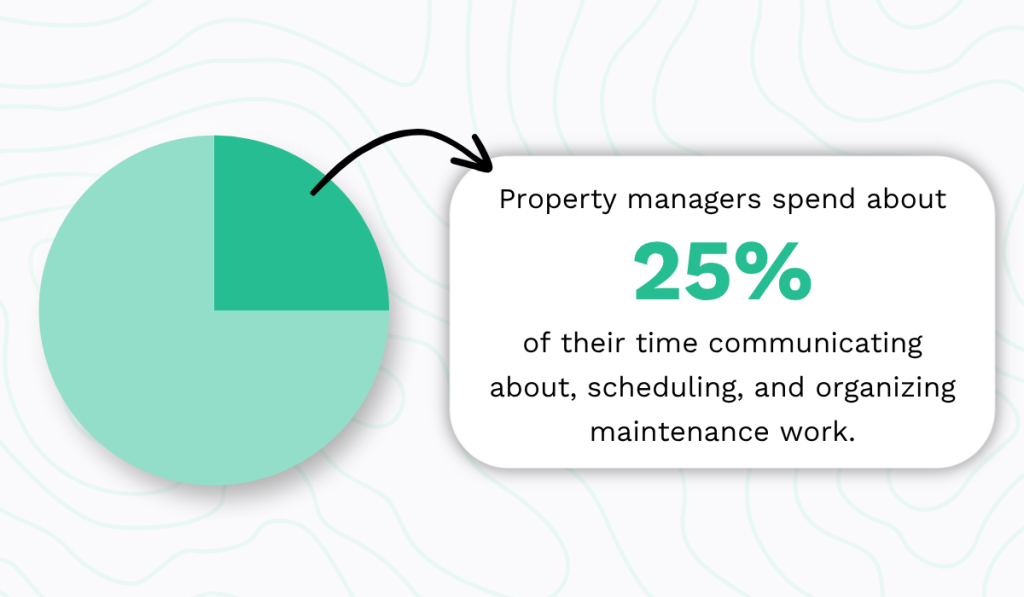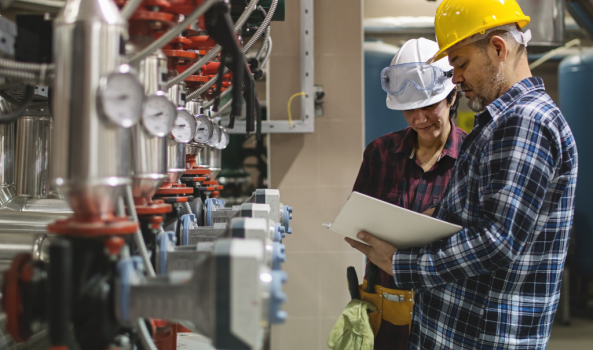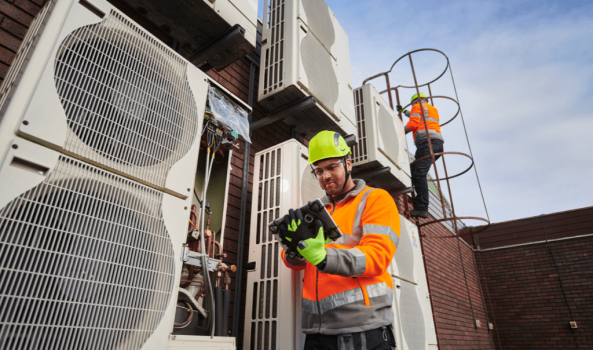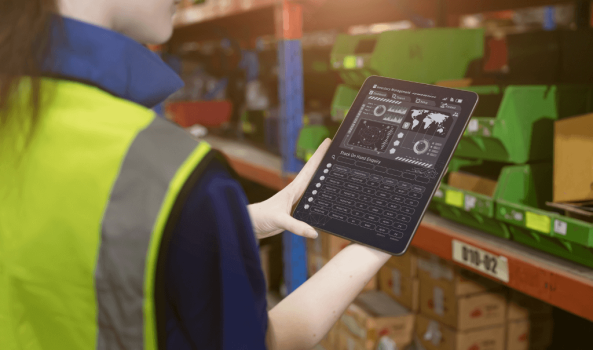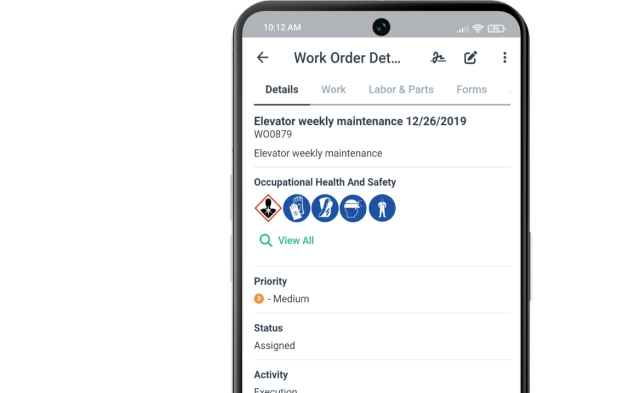Get a Free WorkTrek Demo
Let's show you how WorkTrek can help you optimize your maintenance operation.
Try for freeKey Takeaways:
- If a landlord fails to repair a property, the tenant has the right to withhold rent.
- Property managers spend 25% of their time managing maintenance work.
- Landlords can optimize operations, save money, and reduce errors through automation.
As a property manager or owner, you’re walking a tightrope.
On one hand, you want to keep your property in great shape, because happy tenants and strong property value are always the goal.
On the other hand, maintenance can be one of the most time-consuming, stressful, and costly aspects of the job.
That said, finding the right balance is possible.
The key lies in a smarter, more efficient approach to maintenance, and that’s exactly what we’re here to help you achieve.
So, read on for our top six tips to streamline your property maintenance and save both time and money.
Implement a Preventive Maintenance Program
Efficient property maintenance starts with a proactive plan.
A structured maintenance schedule that includes regular inspections and maintenance:
- helps prevent costly breakdowns
- extends the lifespan of assets
- reduces the need for emergency repairs
After all, emergency maintenance is time-consuming and more costly, which can negatively impact tenant satisfaction.
Early intervention makes more sense:
Give attention to your assets now, and you won’t have to worry about major disruptions down the line.
Take roofs, for example.
They are a significant investment for any property owner and a serious liability if neglected.
That’s why Thad Brown, owner and founder of Dynamic Alliance Roofing LLC, advises property managers to conduct a thorough roof inspection at least once a year:
As a property manager, you’ve already got your hands full managing tenants, vendors, finances, and more.
So, scheduling and tracking preventive upkeep tasks seems like too big of a chore.
Luckily, thanks to CMMS solutions like WorkTrek, it doesn’t have to be that way.
WorkTrek automates preventive maintenance tasks, providing you with customizable templates that include standard operating procedures, photos, instructions, and more.
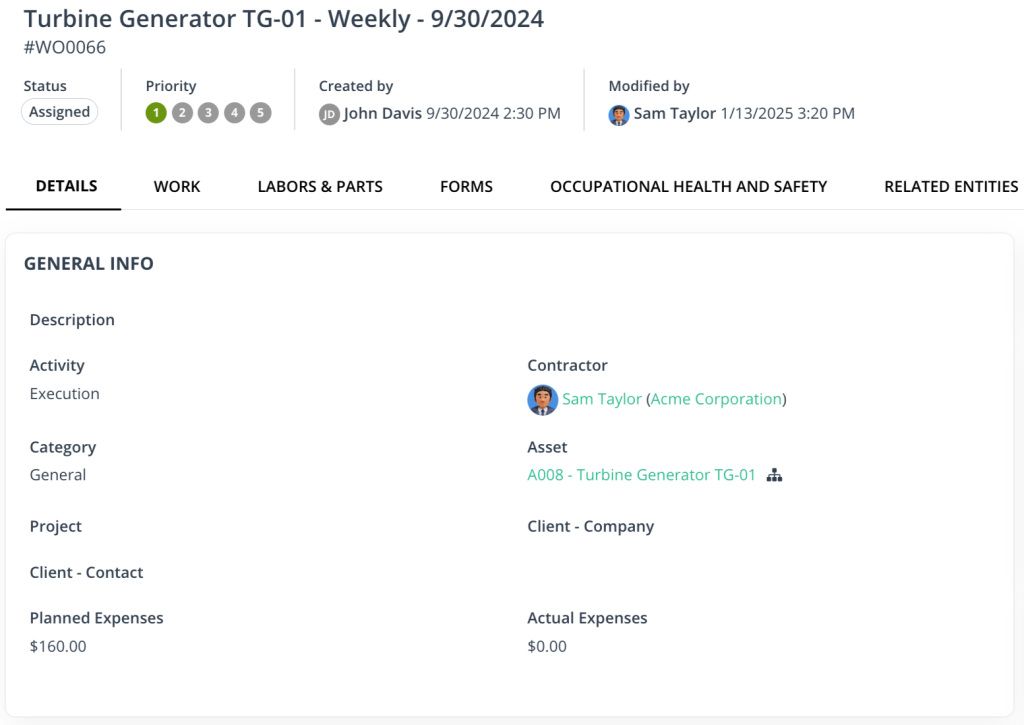
You can even schedule recurring tasks based on time, usage, temperature, pressure, or other conditions, ensuring that every component receives timely attention.
Additionally, if an inspection fails, WorkTrek automatically generates follow-up work orders to address repairs and ensure regulatory compliance.

That way, nothing slips through the cracks, and your property stays in top condition, efficiently and cost-effectively.
With tools like WorkTrek, preventive maintenance becomes easy.
Create a Property Inspection Checklist
Preventive maintenance goes hand in hand with checklists.
A standardized checklist ensures that no task is overlooked and promotes consistency across teams and locations, helping you surface hidden issues before they escalate into costly repairs.
Of course, not all maintenance tasks carry the same weight.
Therefore, for best results, your checklists should be tailored to your specific operational needs and risk factors to help your team prioritize urgent issues over minor cosmetic ones.
Here are some key dimensions to consider when building or optimizing your maintenance checklists:
| Frequency of Use | High-use systems (e.g., elevators, HVAC, plumbing) require more frequent checks. |
| Seasonality | Some assets are more active or vulnerable depending on the season—adjust accordingly. |
| Risk Level | Life safety systems and regulatory compliance areas should always be top priorities. |
| Cost of Failure | Focus on equipment where breakdowns lead to high repair costs, liability, or downtime. |
| Manufacturer Recommendations | Follow OEM guidelines for service intervals and component checks. |
Breaking tasks down in this manner makes it much easier to know where to focus your attention and what can wait.
After all, your time and resources are finite.
Now, here is some good news.
When creating checklists, you don’t need to start from scratch.
There are plenty of great checklist examples online, like the one from Second Nature shown below.
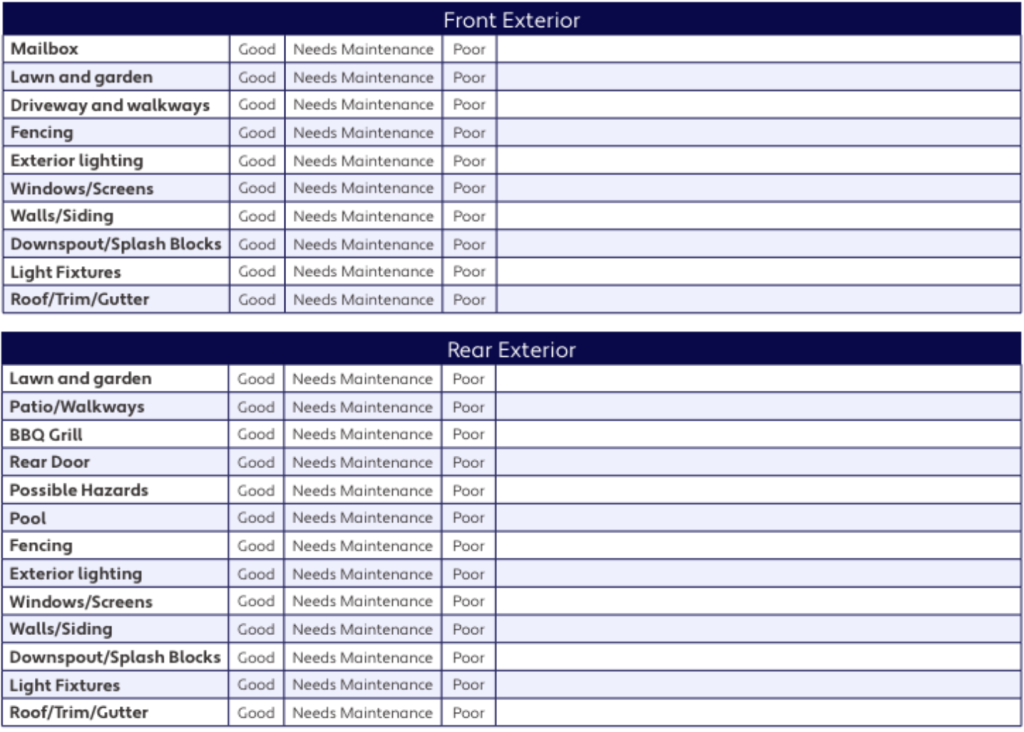
You can use those templates as a baseline, and then customize them to fit your unique requirements.
However, with digital maintenance tools like a CMMS, managing checklists is even easier.
Instead of having to deal with paper or Excel sheets, you can create, assign, and update checklists across all your properties in just a few clicks.
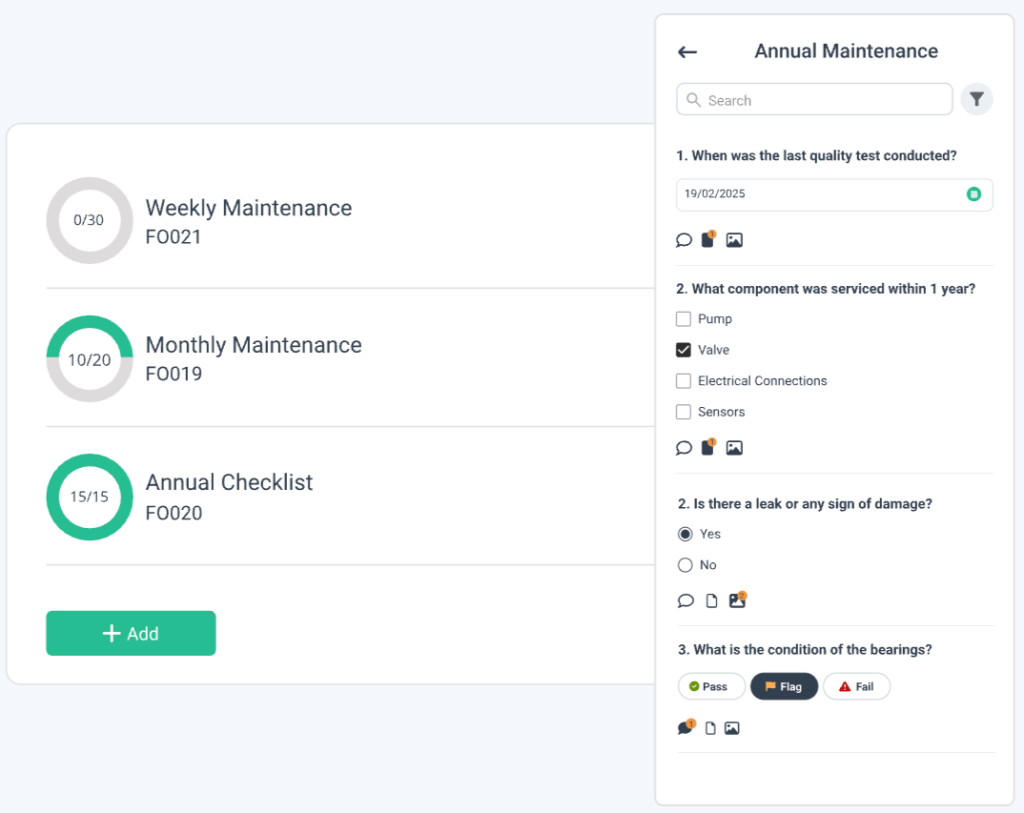
Even better, you can attach them directly to preventive maintenance tasks, work orders, or logs to ensure they’re followed.
All in all, if you want maintenance done thoroughly and consistently, checklists are a must.
They might seem like a simple solution, but they work.
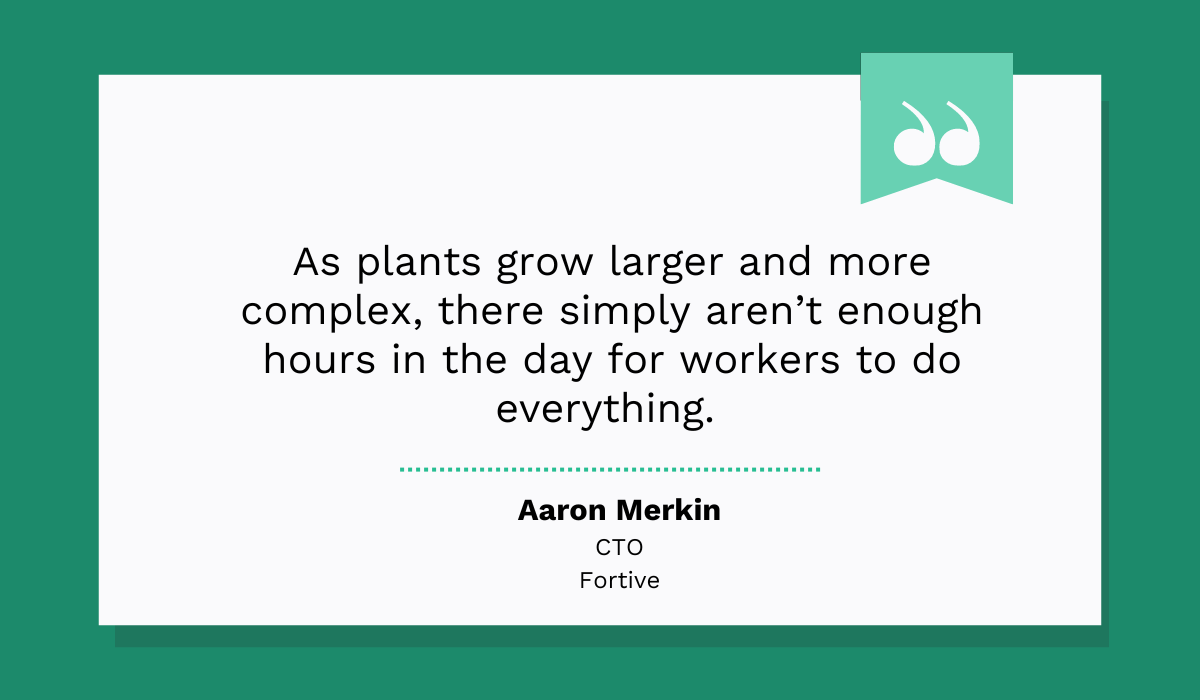
Respond to Maintenance Requests Promptly
Despite all the preventive repairs and thorough inspections, things will still break.
When they do, how you respond makes all the difference.
Therefore, always try to acknowledge and address tenant repair or maintenance requests quickly, ideally within 24 to 48 hours.
This matters, not just because it prevents minor issues from spiraling into costly problems, but also because it reduces your liability and helps retain happy, long-term tenants.
However, if that sounds like a big ask, you’re right to be concerned.
According to the 2022 Propra survey, property managers spend roughly 25% of their time just communicating about, scheduling, and organizing maintenance work.
That’s an entire quarter of your work week spent on managing maintenance alone.
So, the idea of replying to every request and following up quickly can easily feel overwhelming.
The only truly efficient way to stay on top of it all is to implement a digital request system.
With such a solution in place, tenants can report issues at any time, and you gain the ability to prioritize and dispatch tasks far more efficiently.
As soon as a request is submitted, you can view it, approve it, assign it to the right person, and follow its progress from start to finish, whether you’re at your desk or on the go.
Plus, these systems eliminate the issue of missing information.
Because the request forms are customizable, you can require specific fields like priority level, property location, category, or even photos.
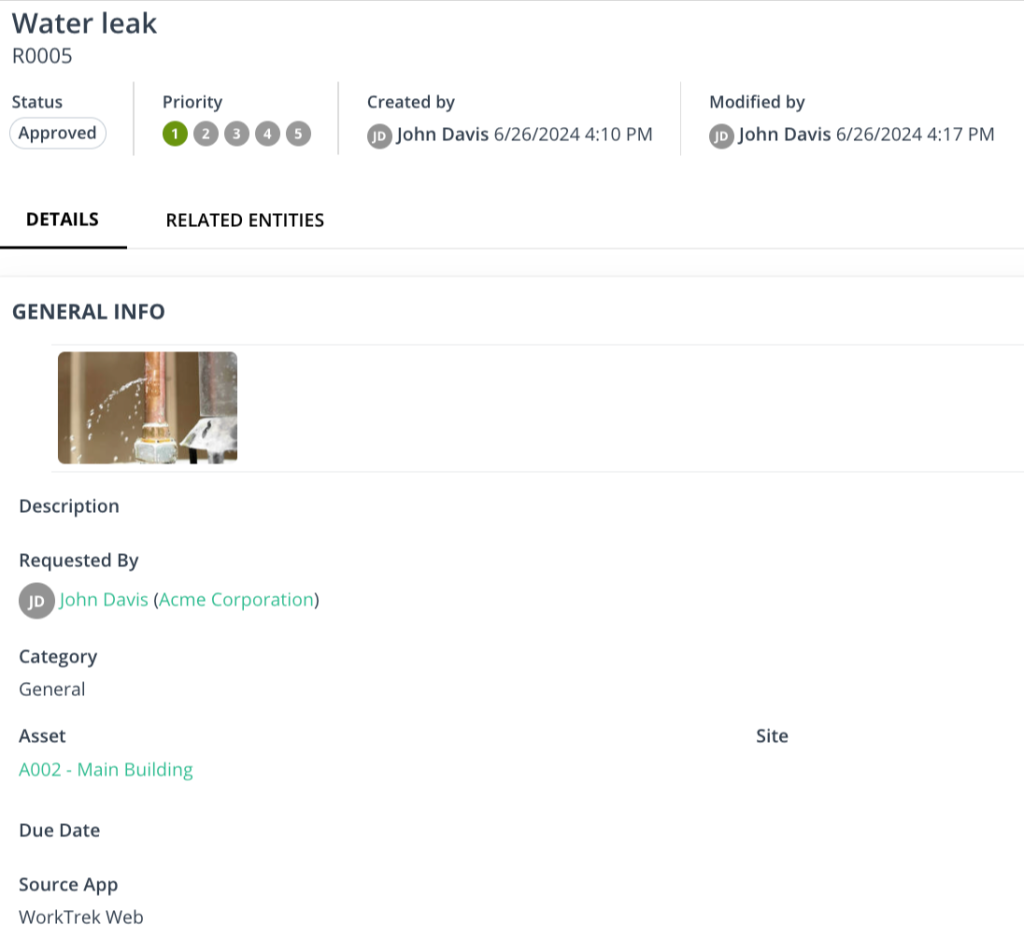
That way, tenants provide everything up front, and if something’s missing, the system won’t let them submit the request in the first place.
Once the job is done, the solution automatically notifies everyone involved and collects feedback, so you’re not stuck sending follow-up texts or fielding calls asking for updates.
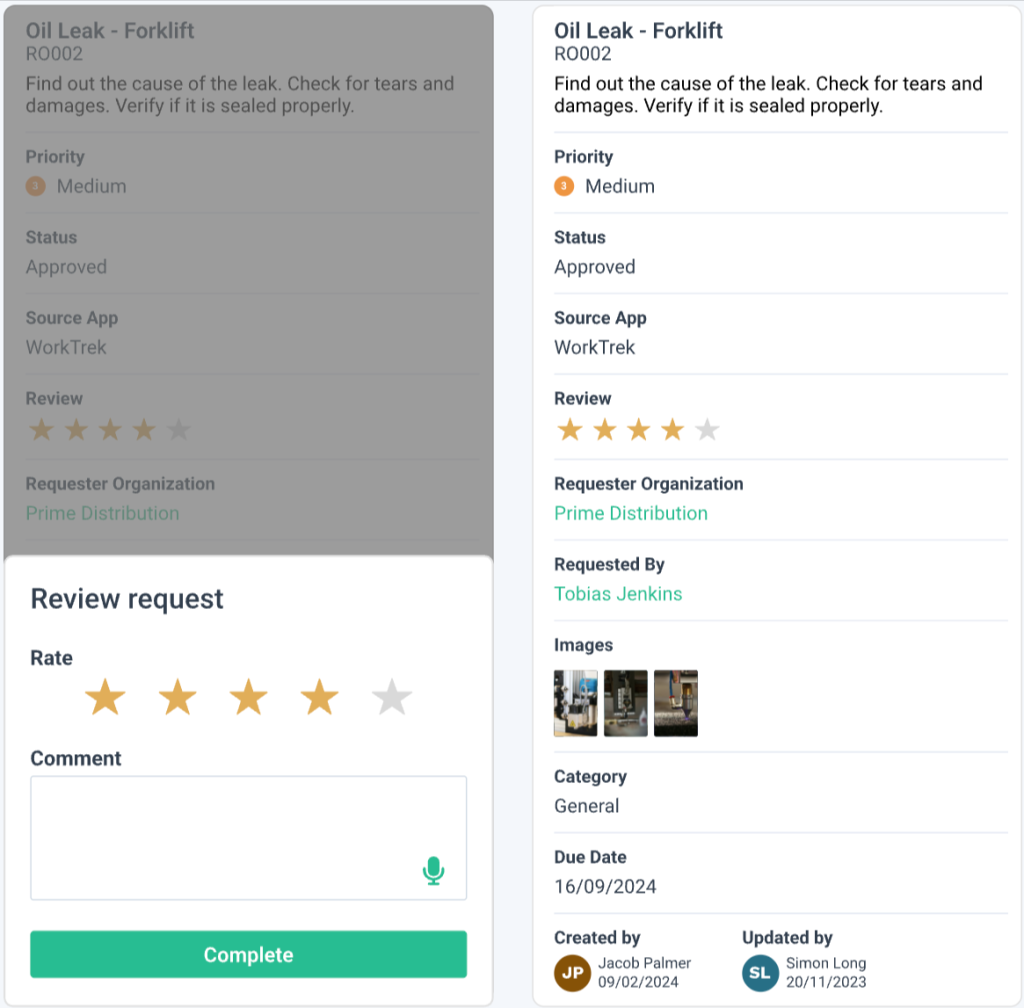
Everything runs smoother, communication is cleaner, and your team can spend more time solving problems instead of juggling conversations.
At the end of the day, your tenants expect fast responses and quick resolutions—and they should.
With a good digital maintenance system in place, you can meet those expectations without putting extra strain on yourself or your team.
Use Durable Components
Opting for long-lasting materials and appliances instead of cheaper alternatives can significantly reduce the frequency and cost of repairs and replacements.
Think of it this way: when you buy high-quality, you’re investing in the longevity and reliability of your property.
Yes, durable items might cost more upfront, but they pay for themselves over time by minimizing rework and reducing the need for constant fixes.
That said, here’s where many people get it wrong: Expensive doesn’t always mean better.
This Redditor summarized it perfectly:
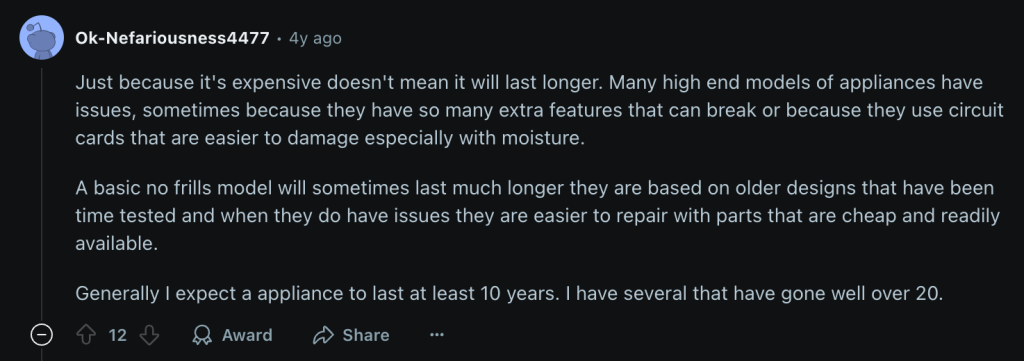
Essentially, your goal is to find basic, durable components without all the unnecessary bells and whistles.
No, you don’t need that fridge with Wi-Fi and a touch screen.
In fact, you might conclude that some of the best finds aren’t even brand new.
You can often save even more by buying secondhand without sacrificing quality.
Take it from Yoselin Genao-Estrella, Executive Director at Neighborhood Housing Services of Queens.
She saved over $6,000 by shopping for kitchen appliances at the Habitat for Humanity NYC ReStore:
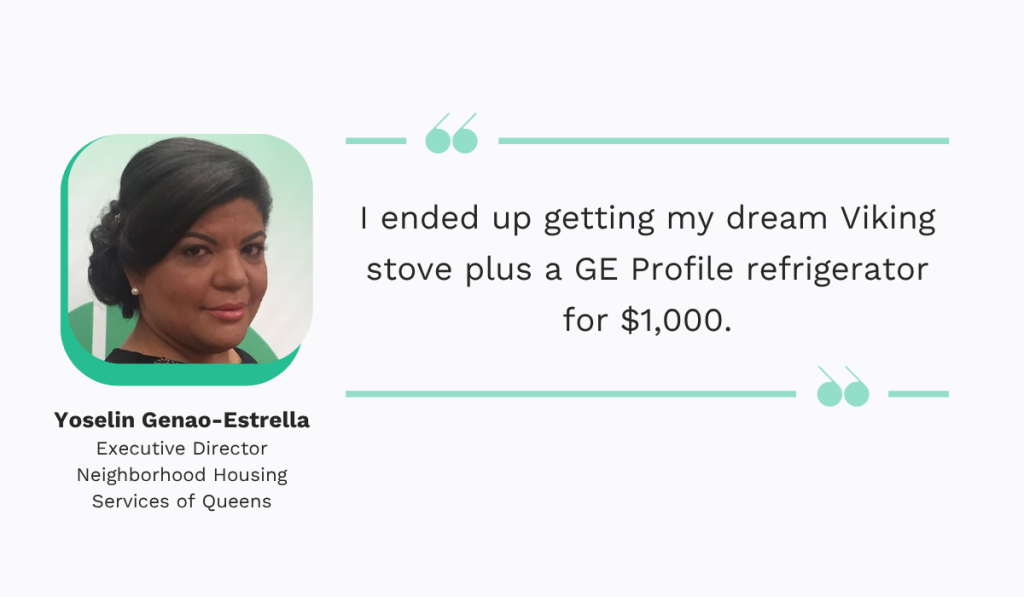
Thrifted appliances can be a smart way to obtain high-end gear at a fraction of the retail cost.
But not everything secondhand is a good deal.
To make sure you’re getting value, here’s a quick used appliance buying checklist adapted from Consumer Reports:
| Do your research | Know what features matter to you before you start shopping. |
| Check store reviews | Use Yelp or the Better Business Bureau to spot any red flags, especially regarding warranties or installations. |
| Ask the right questions | Inquire about the last inspection, replaced parts, and their manufacturer (OEM vs generic). |
| Test before you buy | Plug it in and test all functions, inspect for rust or damage, smell for mold or mustiness, and ensure the appliance sits level. |
| Negotiate | You may have more leverage if you’re paying cash, buying multiple items, or taking it home immediately. |
In the end, no matter your budget or approach, always prioritize quality.
It may take more effort and cost upfront, but it will save you a lot of money, time, and stress in the long run.
Familiarize Yourself with Rental Laws
To operate legally, a rental property must meet specific habitability standards.
Therefore, as a property manager or owner, you need to understand and comply with local, state, and federal landlord-tenant laws at all times.
This includes staying informed about regulations such as the following:
| The Fair Housing Act | It is illegal to delay or deny maintenance services based on race, religion, sex, national origin, disability, or other protected characteristics. |
| The Americans with Disabilities Act (ADA) | Property managers must maintain accessibility features, including ensuring elevators are operational, ramps and entrances are unobstructed, and automatic doors are functioning. |
| The Lead-Based Paint Hazard Reduction Act | For rental properties built before 1978, landlords and property managers are required to follow strict protocols regarding lead-based paint disclosure and remediation. |
Failing to comply with these regulations can result in serious consequences, including hefty fines, lawsuits, and putting your tenants’ health and safety at risk.

Even if it doesn’t go that far, tenants may still be within their rights to withhold rent if you’re not handling repairs properly.
Suzy Hershman, Resolution Department Lead at HFIS Group, a specialist insurance services provider, explains:
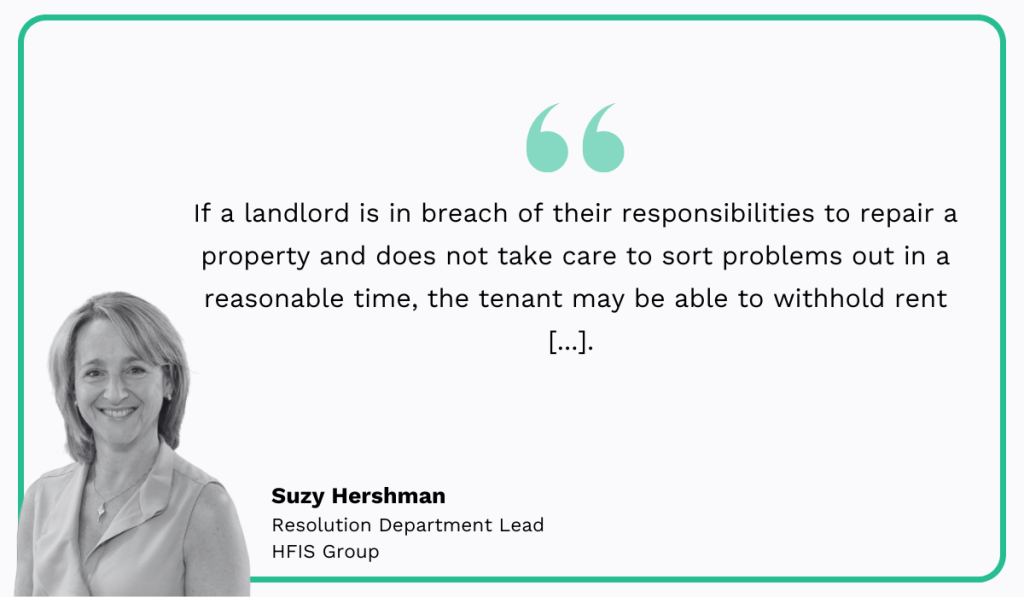
That’s exactly what happened with HavenBrook Homes, one of the largest corporate landlords in Minnesota.
In 2022, the company was sued for failing to maintain adequate living conditions, misrepresenting its maintenance practices, and violating lead paint removal laws.
As a result, they were ordered to forgive tenants’ past-due rent and pay $2.2 million to the state, most of which went straight back to the people they let down.
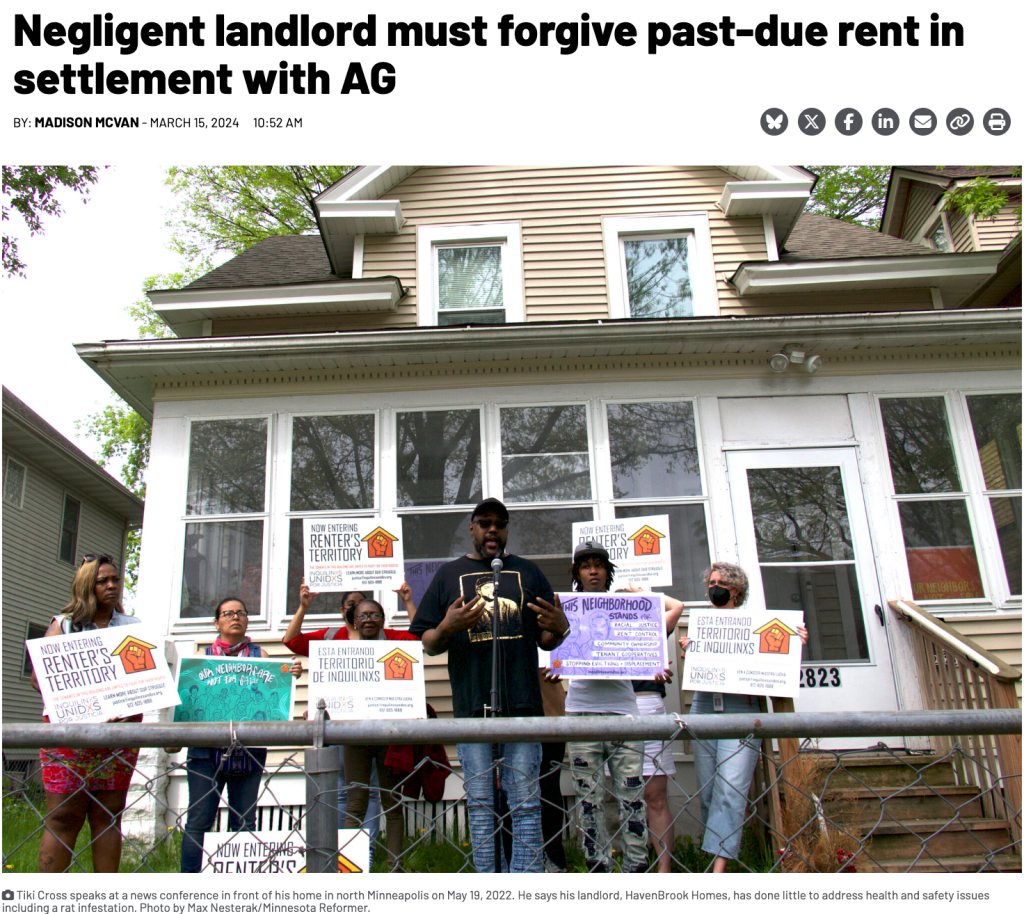
Don’t let this be you.
Make it a habit to review state and local housing regulations regularly.
If staying compliant feels overwhelming, don’t go it alone.
Work with a real estate attorney or join a property management association to stay informed and protected.
Keep a Record of Everything
Last but not least, always maintain detailed records of all maintenance requests, inspections, repairs, contractor invoices, warranties, and communications.
These records form the backbone of your property’s maintenance history, enabling accurate budgeting, informed planning, and effective dispute resolution with tenants or vendors.
Ultimately, failing to do so can have serious—and sometimes dangerous—consequences.
Consider the case of One Housing, a housing association operating in London and the South East of England.
In 2022, a ceiling collapsed in a resident’s home after the landlord failed to keep accurate records about asbestos in the building and delayed important repairs for 14 months.

The Housing Ombudsman launched an investigation and discovered over 800 errors in their asbestos register.
Properties that may have contained asbestos were incorrectly labeled “no-risk,” while others were flagged as “high-risk” based on outdated data.
Housing Ombudsman Richard Blakeway noted:
“This case is a reminder for landlords that when hazards and safety are present within a complaint, landlords should act quickly and inspect these thoroughly.
It also underscores the importance of knowledge and information management, which is so often the foundation to an effective service or complaint response.”
As a property owner or manager, you can’t afford to operate in the dark.
You need to know what’s been done, what’s pending, and what requires immediate action, without relying on memory or guesswork.
So, for maximum efficiency, digitize your records using cloud-based maintenance management software.
These platforms centralize all documentation, making it easy to access and update them from anywhere.
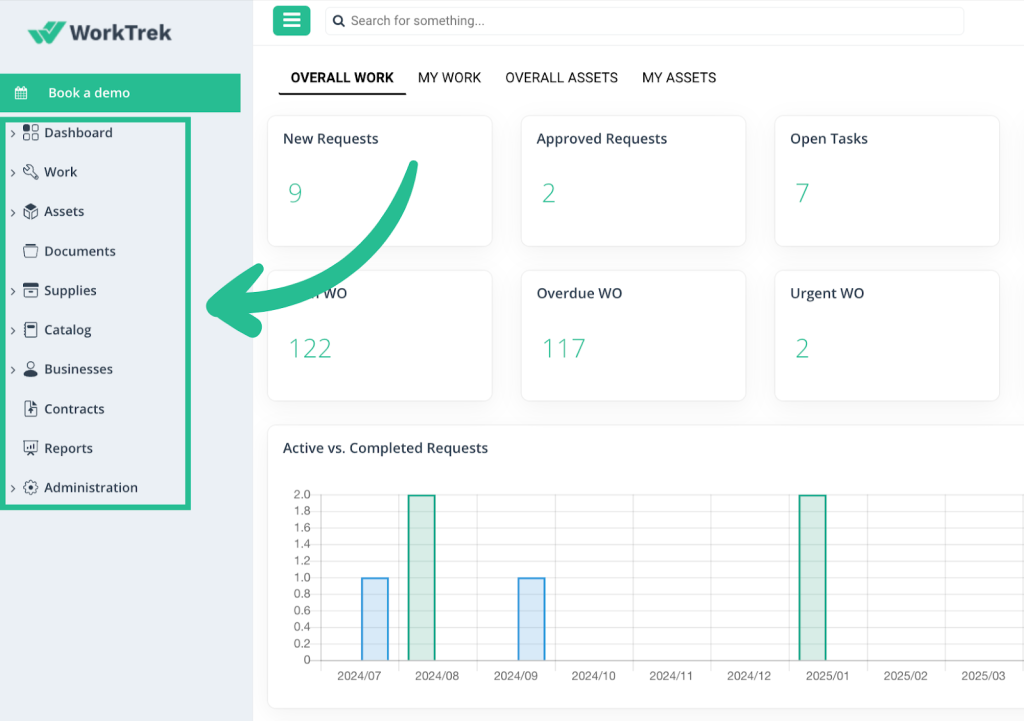
Field teams can log activity, upload photos, and share real-time updates via mobile apps.
You’ll also benefit from automated reports and performance summaries, offering a clear, real-time view of your operations.
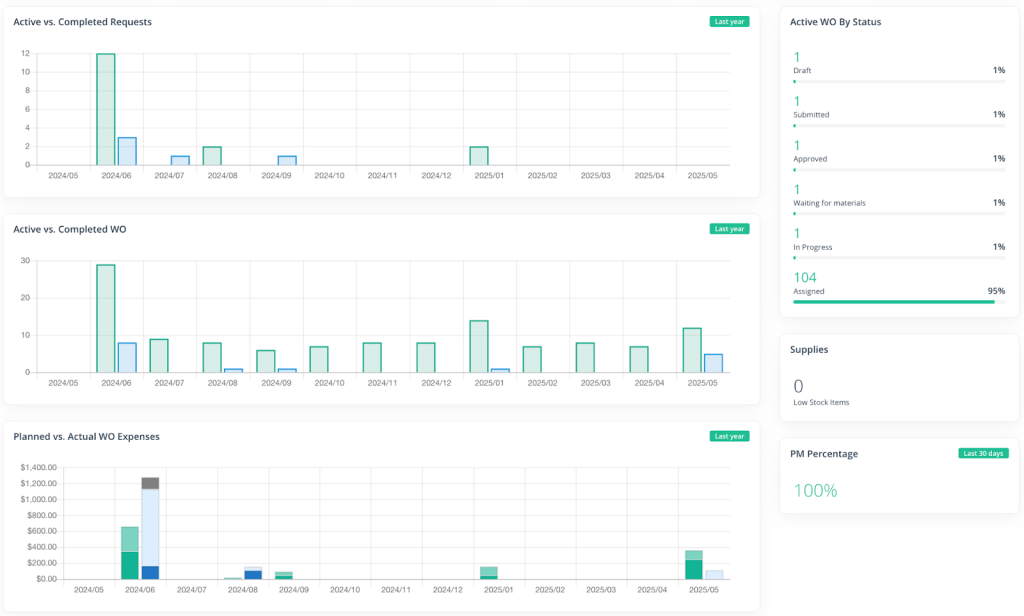
No need to drown in error-prone binders and spreadsheets. Everything you need is right there at your fingertips.
The bottom line: Don’t underestimate good record-keeping.
It keeps your properties safe, protects you legally, and makes your entire maintenance operation more efficient.
Conclusion
Property maintenance doesn’t have to be a constant juggling act of emergencies, frustrations, and late-night stress.
In fact, with the right mindset and systems in place, it can become one of your strongest competitive advantages.
So don’t just aim for “good enough”. Aim for “the best”.
Embrace digital tools, stay proactive, and build a maintenance process you’re proud of.
Your future self—and your tenants—will thank you.




